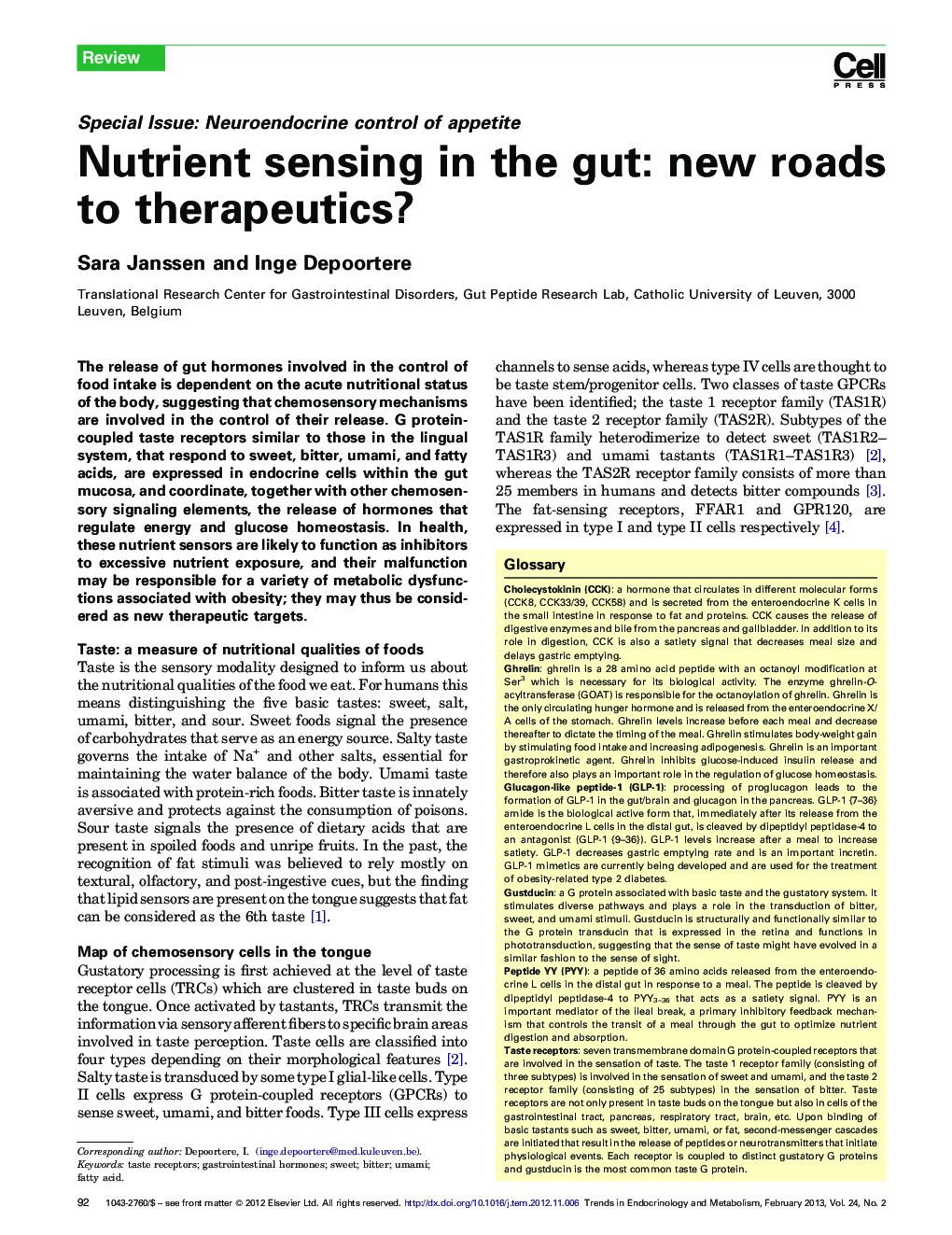| Article ID | Journal | Published Year | Pages | File Type |
|---|---|---|---|---|
| 2810351 | Trends in Endocrinology & Metabolism | 2013 | 9 Pages |
The release of gut hormones involved in the control of food intake is dependent on the acute nutritional status of the body, suggesting that chemosensory mechanisms are involved in the control of their release. G protein-coupled taste receptors similar to those in the lingual system, that respond to sweet, bitter, umami, and fatty acids, are expressed in endocrine cells within the gut mucosa, and coordinate, together with other chemosensory signaling elements, the release of hormones that regulate energy and glucose homeostasis. In health, these nutrient sensors are likely to function as inhibitors to excessive nutrient exposure, and their malfunction may be responsible for a variety of metabolic dysfunctions associated with obesity; they may thus be considered as new therapeutic targets.
